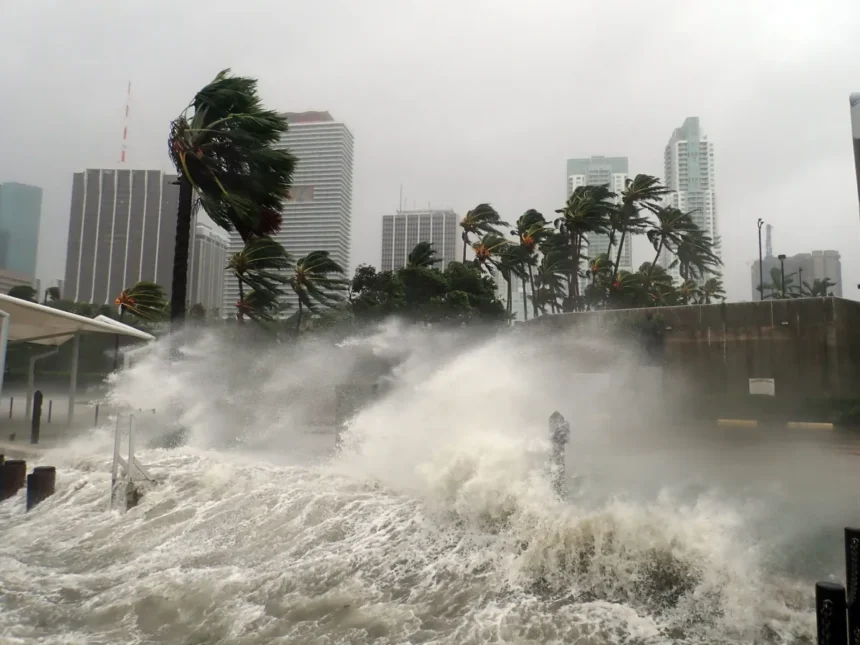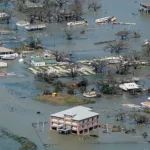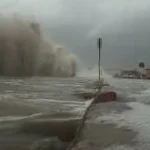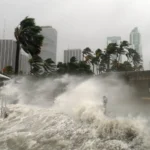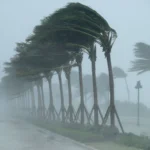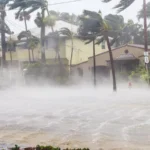When a hurricane strikes, knowing the evacuation procedures can be the difference between life and death. Florida, due to its geographical position, is particularly vulnerable to these devastating storms. As Floridians prepare for the next hurricane season, it’s vital to be informed about the state’s evacuation procedures. In this comprehensive guide, we will outline the official evacuation procedures, recommended actions, and how to stay safe during a hurricane evacuation in Florida.
Understanding Florida’s Hurricane Threat
Florida faces hurricanes regularly, typically during the hurricane season that runs from June 1st to November 30th. These storms bring heavy rain, strong winds, and dangerous storm surges that threaten life and property. When a hurricane is imminent, authorities may issue an evacuation order for affected areas to ensure public safety.
Types of Evacuation Orders
There are three primary types of evacuation orders issued in Florida, each with specific actions residents must follow:
1. Voluntary Evacuation
A voluntary evacuation is often issued when there is a potential threat from a hurricane. It is not mandatory, but residents in flood-prone areas or in homes that may not withstand strong winds are encouraged to evacuate to safer locations. Although it’s not required, it’s highly advisable to take this warning seriously and evacuate early to avoid overcrowded roads and shelters.
2. Mandatory Evacuation
When a mandatory evacuation is issued, residents are required by law to leave their homes and move to safer areas. Local governments issue mandatory evacuation orders when it is determined that the hurricane poses a significant threat to life. This is especially common in coastal regions, low-lying areas, and mobile home parks, where the impact of the storm could be catastrophic. Failing to comply with a mandatory evacuation order could put your life in grave danger.
3. Phased Evacuation
In some cases, officials may implement a phased evacuation to reduce traffic congestion on major highways. Phased evacuations are typically organized by zones, starting with the most vulnerable areas, such as coastal regions, and gradually expanding inland. This method allows for a more orderly evacuation, giving priority to those in the greatest danger.
How to Know If You Are in an Evacuation Zone
Florida uses a hurricane evacuation zone map, which is divided into zones A through E, based on the level of risk. The Florida Division of Emergency Management and local authorities will issue evacuation orders depending on which zone is most at risk during an approaching hurricane.
To find out which evacuation zone you are in, visit the official Florida Disaster website or use local tools such as county emergency management websites. Knowing your evacuation zone ahead of time will help you act quickly when an order is given.
Preparing for Evacuation
Before a hurricane strikes, it’s crucial to have an evacuation plan in place. Here are the key steps to prepare for an evacuation:
1. Create an Emergency Supply Kit
Ensure you have an emergency supply kit that includes:
- Bottled water (enough for at least three days)
- Non-perishable food items
- Flashlights and batteries
- First aid kit and essential medications
- Important documents (insurance, identification)
- Cash, as ATMs may be unavailable
- Maps of the evacuation routes
- A battery-powered or hand-crank radio
2. Secure Your Home
If you’re evacuating, it’s important to secure your home before you leave. This includes:
- Shuttering windows or installing hurricane-proof shutters
- Moving outdoor furniture indoors
- Turning off utilities, including electricity, water, and gas, if instructed to do so by authorities
- Locking all doors and windows
3. Plan Your Evacuation Route
Know your evacuation route before you leave. The Florida Department of Transportation (FDOT) has designated specific hurricane evacuation routes throughout the state, ensuring the safest and most efficient way to leave threatened areas. Be aware of these routes and stay informed through local authorities to know when it’s time to evacuate.
4. Know Your Shelter Options
Not everyone has the option to stay with family or friends during a hurricane. If this applies to you, it’s important to locate emergency shelters ahead of time. Florida offers general population shelters, special needs shelters, and pet-friendly shelters. Ensure that you check the shelter guidelines and bring necessary items such as blankets, pillows, and any medications you may need.
- What Category Is the Hurricane Currently Impacting Florida?
- What Are the Best Ways to Track the Current Hurricane in Florida?
- What Is the Projected Path of the Latest Hurricane in Florida?
- Which regions in Florida are at the highest risk for hurricanes this year?
- How Is Florida Getting Ready for the 2024 Hurricane Season?
Evacuation Routes and Traffic Information
When evacuating, major highways and interstates may experience high traffic volume. To alleviate congestion, the Florida Highway Patrol (FHP) may implement contra-flow on certain highways, which reverses traffic flow to ensure all lanes head in the same direction—away from the danger zone.
Key evacuation routes include:
- Interstate 10 (I-10): Runs east-west across northern Florida, a primary route for those leaving coastal areas.
- Interstate 75 (I-75): Serves the west coast of Florida, running from south to north.
- Interstate 95 (I-95): Runs along the east coast, also serving those in coastal regions.
- Florida’s Turnpike: A major toll road running north-south through central Florida.
For live traffic updates and evacuation route conditions, tune in to local news channels, check the FDOT website, or use apps like Google Maps and Waze for real-time updates on traffic patterns and road closures.
During the Evacuation
While evacuating, it is important to remain calm and patient. Heavy traffic is inevitable, especially as you approach the evacuation deadline. To avoid frustration and delays, leave as early as possible. Additionally, keep the following tips in mind:
- Stay informed: Listen to local news reports and updates from the National Weather Service (NWS) to stay aware of changes in the storm’s path.
- Avoid shortcuts: Stick to official evacuation routes. Taking unmarked shortcuts could lead you into unsafe areas or blocked roads.
- Keep your gas tank full: Gas stations may run out of fuel quickly during a mass evacuation, so ensure you have a full tank before leaving.
- Take your time: Speeding or reckless driving can lead to accidents, making the situation even more dangerous. Follow the flow of traffic and drive cautiously.
What to Do If You Cannot Evacuate
In some cases, evacuation may not be possible due to lack of transportation, medical reasons, or the storm approaching too quickly. If you find yourself in this situation, here’s what you should do:
- Shelter in place: Choose an interior room on the lowest level of your home, away from windows and exterior walls.
- Stay updated: Continue to listen to emergency broadcasts for the latest updates on the storm and emergency services.
- Prepare for power outages: Hurricanes often lead to widespread power outages. Be prepared with backup power options such as generators, and have flashlights handy.
Returning Home After the Hurricane
Once the storm passes and authorities declare it safe, you may return home. However, it’s essential to take precautions:
- Wait for clearance: Do not return to evacuated areas until local officials give the green light.
- Inspect for damage: Carefully inspect your home for structural damage, gas leaks, and downed power lines.
- Document losses: Take photos of any damage for insurance purposes.
- Stay safe: Avoid wading through floodwaters, which can contain hazardous materials and pose drowning risks.
Conclusion
Florida’s hurricane evacuation procedures are designed to save lives. By being well-informed and prepared, residents can safely navigate the dangers of a hurricane. Remember to monitor local advisories, understand your evacuation zone, and have a solid plan in place before the storm hits.
If you want to read more information about how to boost traffic on your Website just visit –> The Insider’s Views.

